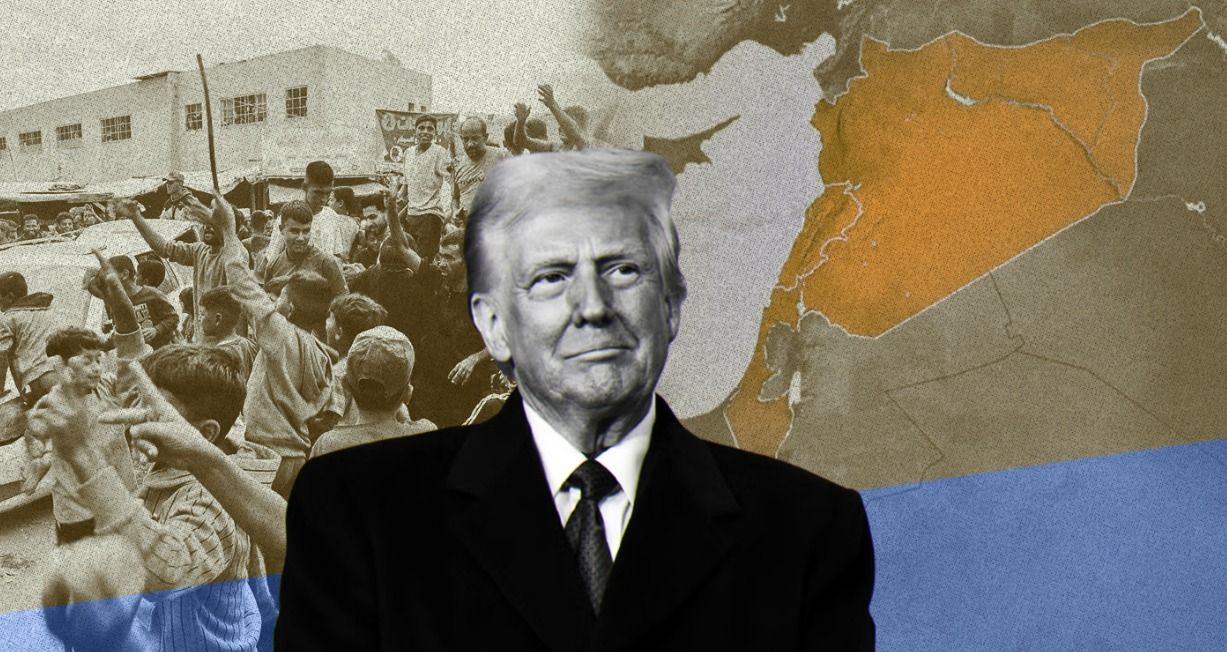- Home
- Middle East
- After Gaza’s Deal, A Momentum in the Region for More Peace Stability in Syria, Lebanon?

©This is Beirut
U.S. President Donald Trump’s push for a peace deal to end the Gaza war has proven to be initially successful. He was able to bring together delegations from Qatar, Egypt, Turkey, Israel, and Hamas in Egypt’s Sharm el-Sheikh in mid-October. In the wake of the deal, Trump flew to Israel and Egypt and chaired a peace summit alongside Egypt's President Abdel Fattah El-Sisi on October 13. More than twenty countries were invited to the event alongside numerous European countries and several countries from Asia and the Americas.
Opportunities for Regional Stability
There is a sense in the region that there is an opportunity to build on the Gaza peace deal to work on broader practical steps that could increase stability in the Middle East. For instance, Egypt’s Al-Ahram daily noted on October 12 that the Egyptian presidential office has said the Sharm el-Sheikh Summit “aims to end the war on the Gaza Strip, strengthen efforts to achieve peace and stability in the Middle East, and open a new phase for regional security and stability.”
The attack on Israel on October 7, 2023, set in motion a number of conflicts around the region. Israeli officials have described this as a war on at least seven fronts. Among the fronts was the Israeli fight against Hezbollah, which peaked between September and November 2024 and resulted in a ceasefire in Lebanon. In the wake of the ceasefire, Lebanon has secured new leadership in the form of President Joseph Aoun and Prime Minister Nawaf Salam, who have sought to move forward with disarming Hezbollah and other armed groups.
Ongoing Threat from Hezbollah
As long as Hezbollah keeps its arms and appears to pose a continued threat to Israel, it is likely that the Israel Defense Forces will continue precision strikes on the group. For instance, on October 12 the IDF said that “yesterday, in the area of Qalaouiyah in southern Lebanon, the IDF struck and eliminated a terrorist in the Hezbollah terrorist organization who took part in attempts to reestablish Hezbollah military infrastructure sites in southern Lebanon.” Members of Hezbollah have complained about the airstrikes and vowed not to give up their arms. They claim they will “not submit” to U.S. or Israeli pressure.
The peace deal in Gaza and the Sharm el-Sheikh meetings mean that it's possible Lebanon could see this as an opportunity to disarm Hezbollah or at least take some initial steps in this direction. It also means that if the ceasefire holds in Gaza, Israel will be able to focus more on making sure Hezbollah does not re-emerge as a threat.
Stability Efforts in Syria
Across the border, in Syria, there are also important moves being made toward stability. The new transition government of Ahmed al-Shara’a came to power in the wake of the fall of the Assad regime. It has struggled to assert itself over the last 11 months. Its largest challenge has been in trying to incorporate regions with minorities into the new central government. This has included clashes in Lattakia in March with members of the Alawite minority and clashes in July with the Druze in Suwayda. Israel has vowed to support the Druze in southern Syria. Damascus has also been trying to find a way to integrate eastern Syria within the new transitional governance framework. Eastern Syria is run by the Democratic Autonomous Administration of North and East Syria (DAANES), and it is secured by the U.S.-backed Syrian Democratic Forces. The SDF is a mostly Kurdish-led force and has tens of thousands of trained fighters who helped defeat ISIS over the last decade. Led by Mazlum Abdi, the group has been trying to figure out a way to fulfill a roadmap by Abdi and Shara’a in March to integrate the SDF into Damascus-run security forces. “Commander-in-Chief of the Syrian Democratic Forces (SDF), Mazloum Abdi, announced on Friday that the SDF will begin formal procedures to join a new Syrian army being established as part of the implementation of the March 10 Agreement,” North Press in eastern Syria reported on October 11.
The announcement followed an important meeting in Damascus on October 7 between Shara’a, U.S. Syria Envoy Tom Barrack, and U.S. Central Command head Admiral Brad Cooper. This meeting was seen as a way to make sure that the “fragile” March agreement would continue to move forward. It’s clear that between the October 7 meeting and the October 11 statement, the SDF sees a clearer path forward to working with Damascus. It’s possible that the Gaza agreement, signed in the late hours of October 8 in Sinai, may have helped push forward progress in Syria. Abdi said on October 11 that the victories achieved by the SDF “are the result of the support and unity of the Syrian people in all their components, and their backing of our national project to combat terrorism…will play a key role in building this new army and will be an integral and strong part of it.” There is now talk of a joint force of Damascus-backed forces and the SDF, which will work with the US against ISIS cells in Syria. This would enable the kind of capacity building necessary to enable SDF units to broaden their work with Damascus. This is a major shift from a week prior when the SDF and Damascus were clashing near Aleppo.
It's important to look at the progress in Syria between the SDF and Damascus as part of a larger trend. Stabilizing Syria will enable greater cooperation against ISIS and also enable the U.S. to play a continued positive role in Syria while also potentially reducing the role of U.S. troops in Syria, which can then concentrate on other issues, such as reconstruction. Movement toward lifting sanctions on Syria has enabled investment. Damascus has also recently sent envoys to Beirut and Ankara.
To achieve the Gaza deal, Trump worked closely with Turkey, Qatar, Egypt, and Israel. Other countries have also praised this deal as paving the way for reconstruction in Gaza. The war in Gaza had led to uncertainty in the region. The possibility that this uncertainty will be reduced potentially leads to a focus on how to resolve other challenges. Lebanon and Syria represent two key countries, long entwined by history, where progress might be made on issues that have been at an impasse over the past year. This will also affect their neighbors, such as Iraq, Jordan, Israel, and Turkey. Washington’s engagement with Ankara regarding Gaza, as well as with Syria involving the SDF, appears to already be getting dividends from the Gaza deal. The main question will be whether the new wind blowing in the region will continue to enable progress.
Read more





Comments